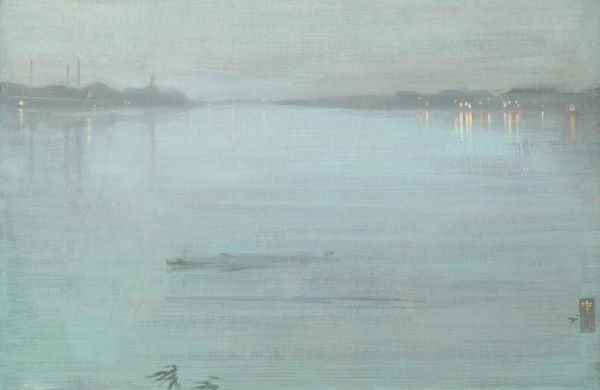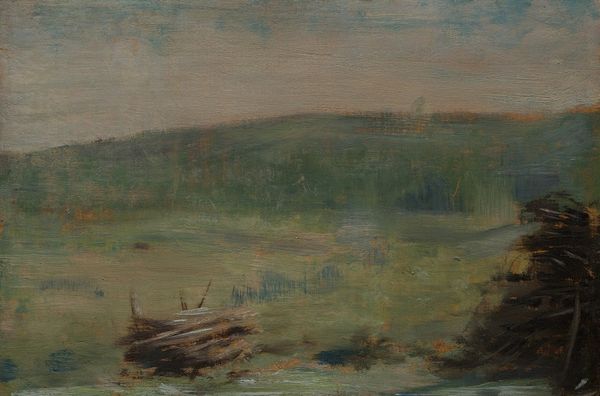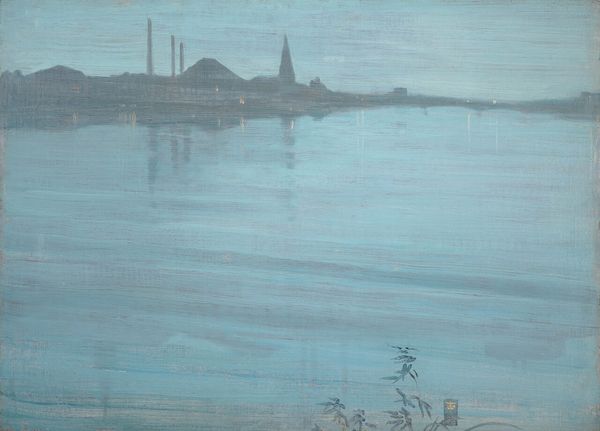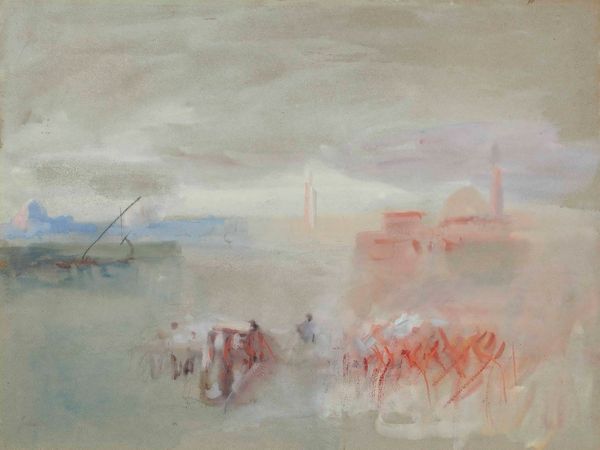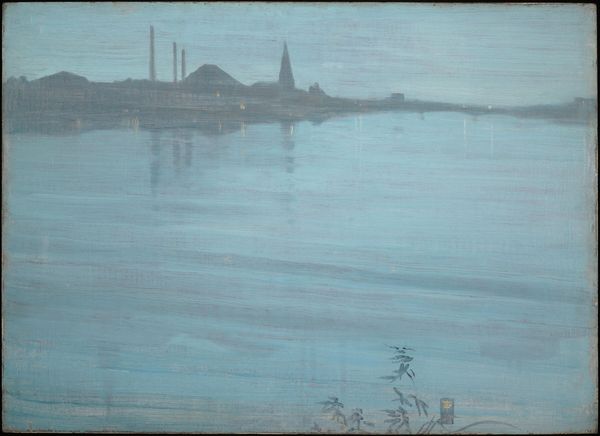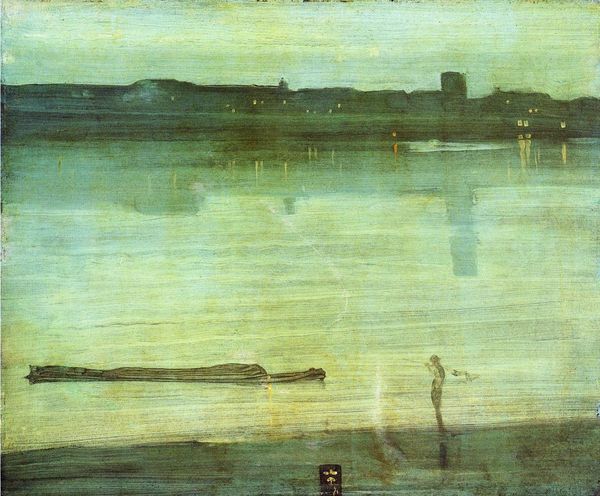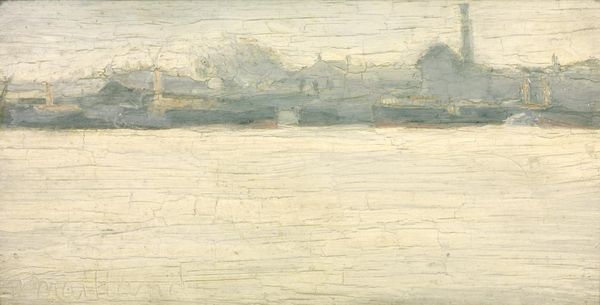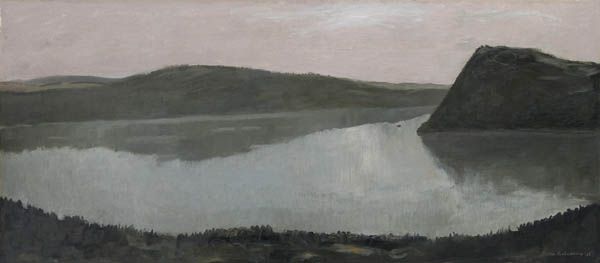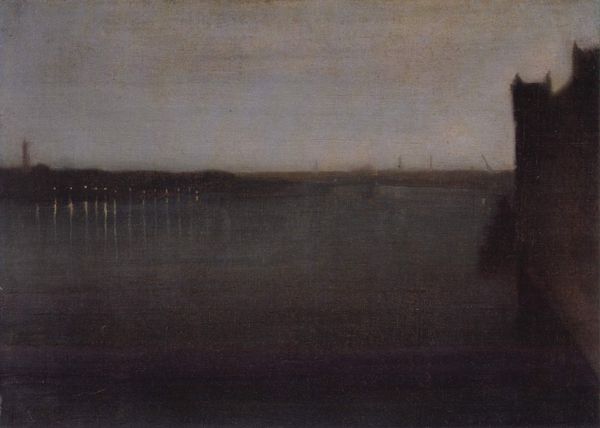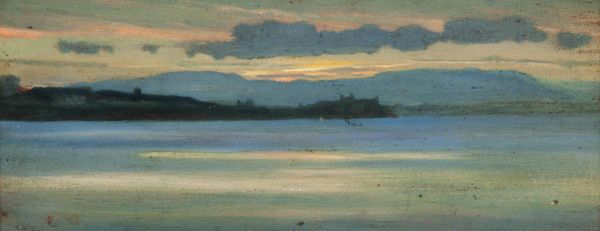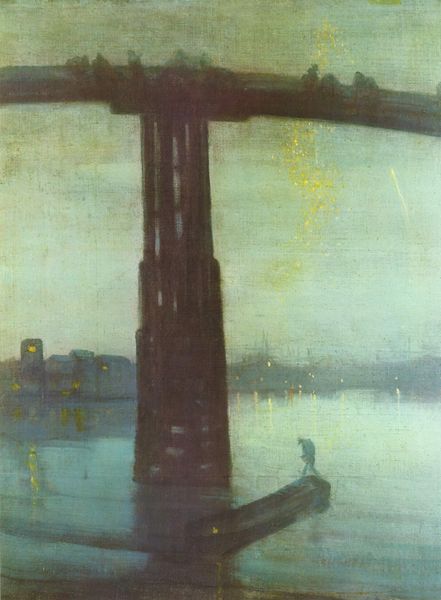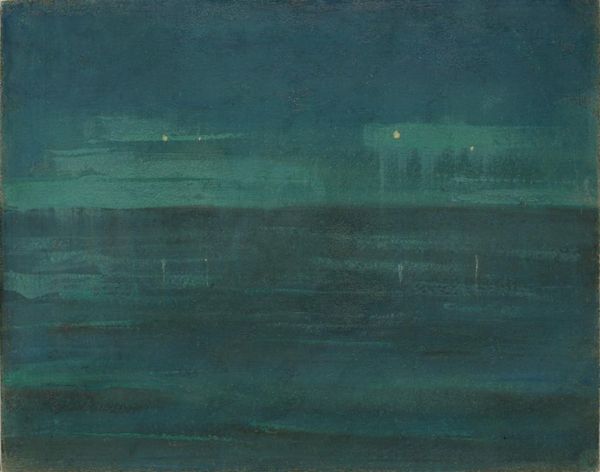
Copyright: Public Domain: Artvee
Curator: Here we have James Abbott McNeill Whistler's "Thames Nocturne," painted around 1872. Editor: It's so subtle, almost monochromatic. The palette of greens and grays creates a hazy, dreamlike atmosphere. What materials did he use? It almost looks like diluted paint over some raw canvas in parts. Curator: Whistler primarily used oil paint here, expertly manipulated to evoke the hazy atmosphere of London at night. This piece demonstrates Whistler’s move toward what he termed “nocturnes”, artistic depictions that were meant to evoke feelings rather than photorealistic copies of scenes, distancing art from traditional academic approaches to image-making. Editor: I am curious about the canvas. Notice how thinly applied the paint is in areas, allowing the material of the canvas itself to contribute to the overall tonality and texture of the artwork. That affects our experience a lot. Was the artist concerned about costs by using so little paint, do you think? Or was this effect more stylistic? Curator: Whistler was deeply concerned with aestheticism, believing in “art for art’s sake." For artists to present artworks to an art market influenced by ideas like these, their goal was purely for creating visual harmony rather than to cater to any moral, narrative, or social purpose. The use of the minimal paint lends it the feeling of a fleeting moment, capturing something ephemeral rather than solid and concrete. Editor: Agreed! And thinking about the making of it – look at that lone boatman barely suggested amidst all of that fog. I see someone making his living, out in the murky Thames. How might this reflect ideas about class and labor at the time, given the context of industrial London? The dark side to it, perhaps? Curator: Exactly! While Whistler wanted viewers to appreciate art divorced from external meanings, he still captured something real about late 19th-century London. The industrial revolution heavily impacted working conditions, wealth disparities, and visibility as air quality worsened with increasing industry and dense urban growth. These realities contrast the romantic appeal that Whistler and others of the era wanted to associate with modernity. Editor: Interesting, to juxtapose "art for art’s sake" with social critique, if somewhat unintentional, about the artist’s contemporary society! The material reality seeps through in interesting ways. Curator: Indeed. A constant tension—art created within, yet seemingly apart from, its surrounding world. Editor: Right, there's a lot going on. The haze hides, and maybe even reveals more than it obscures.
Comments
No comments
Be the first to comment and join the conversation on the ultimate creative platform.
